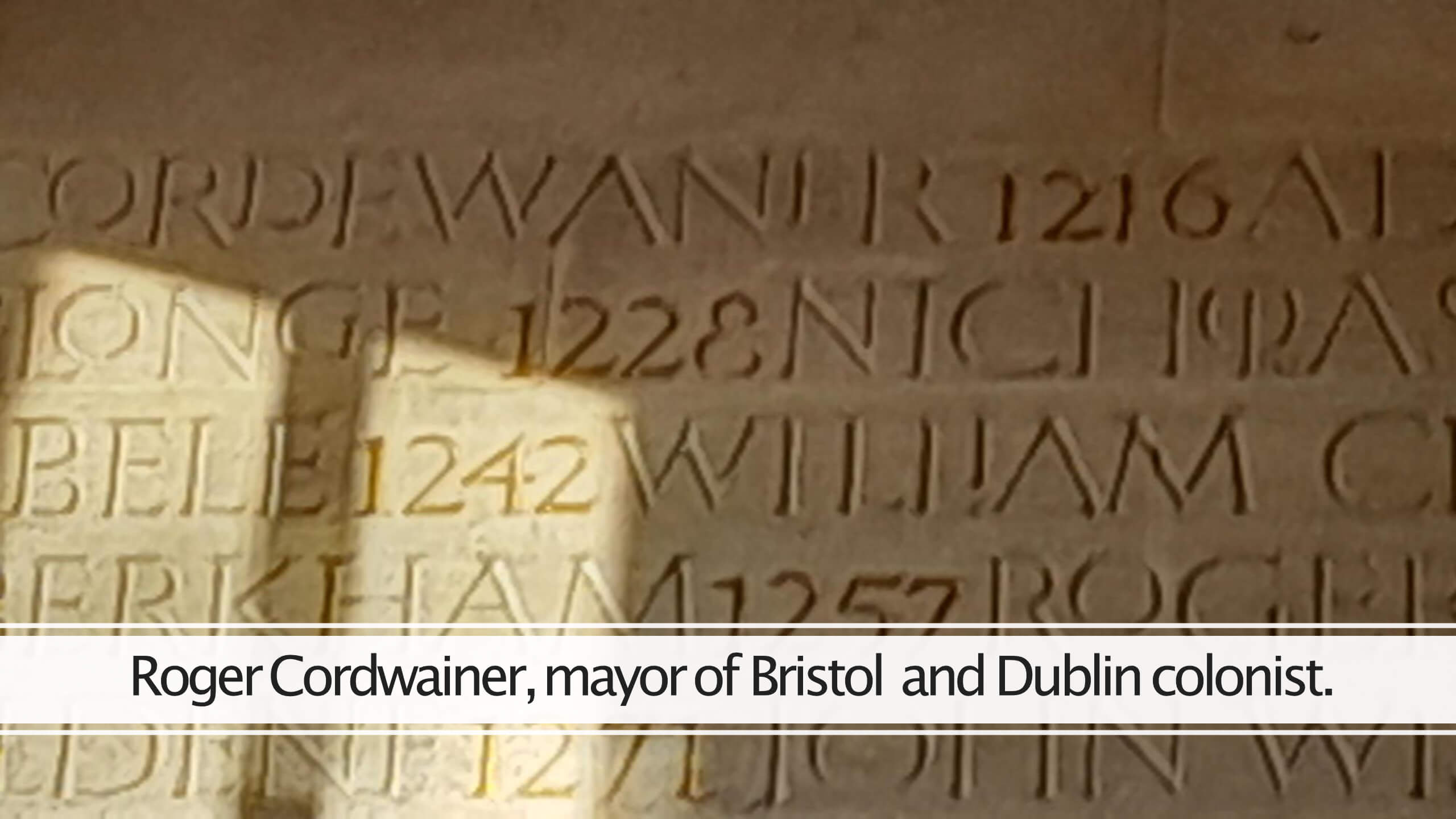
Bristol has forgotten aspects of its past. These days, people are more conscious of the topic of slavery than they were, but are much less aware of Bristol‘s historical association with Ireland, and this talk enlightened us about this association during the Medieval period. Professor Smith pointed out that there is only one statue of an Irishman in the city, that of Edmund Burke, born in Dublin, who was a Bristol MP for six years in the 1780s and is still famous for his political ideas.
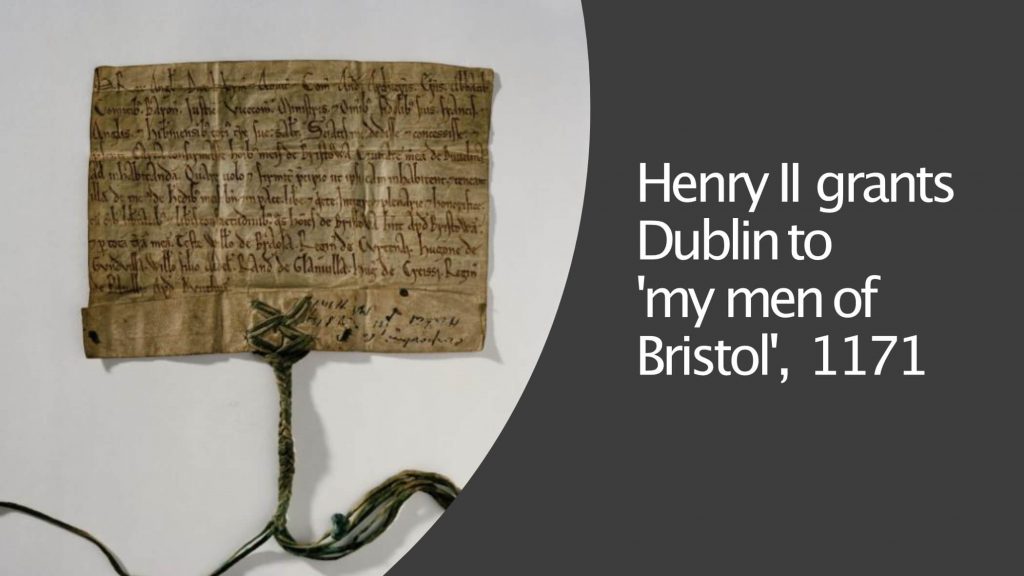
In the Medieval period Edward the third’s charter to Bristol is well known, but Bristolians are perhaps less aware of Henry the second’s charter of 1171, which we will come to later. Earlier than this following the probable foundation of Bristol in the 10th Century A.D., its first mention in the Anglo-Saxon Chronicle refers to the future king Harold’s flight to Bristol and then to Ireland after being expelled by Edward the Confessor. His family subsequently followed him to Leinster. In 1068 (after the Norman conquest) Harold’s sons attacked Bristol’s walled defences unsuccessfully and returned to Ireland.
Slavery ended in England at the time of the Norman conquest, but before this Bristol had a slave market; some of the slaves ended up in Ireland.
During the anarchy of 1135 to 54 when Stephen and Matilda fought for the crown of England, Bristol and much of the south-west of England sided with Matilda, whose half brother was Robert, the powerful Earl of Gloucester. This would bear fruit later.
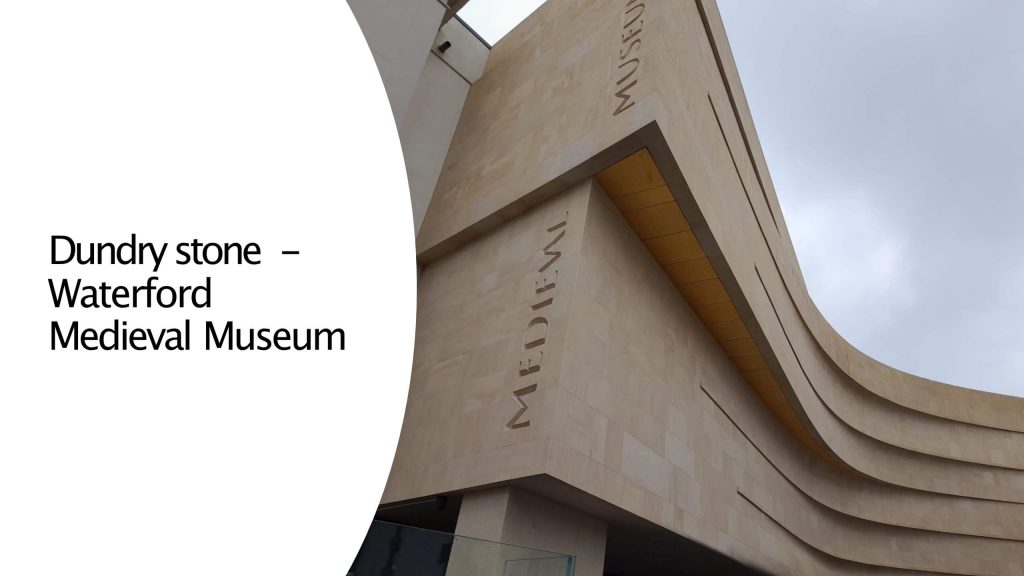
Despite the unsettled times, there was a generation or two of church building in Bristol, including Saint Augustine‘s Abbey built by Robert Fitz Harding, Lord of Bedminster (which then stretched as far as Dundry). Robert Fitz Harding had connections with Ireland and specifically with the king of Leinster, Dermot, who came to him when exiled. Robert Fitz Harding helped to get men for Dermot, who then regained his kingdom. Fitz Harding retired to his Abby of Saint Augustine where he died in 1171.
Matilda had never gained the throne of England, but her son did as Henry the second. Henry remembered Bristol‘s support for his mother and in 1171 he promulgated a charter granting Dublin to “my men of Bristol” after Henry had sailed to Ireland to establish his overlordship of Ireland. The charter stated ad habitandum, meaning it was for Bristolians to colonise the city and some of them did. The charter is held in Dublin.
However, in 1192 John, the future, king of England and Lord of both Bristol and Ireland produced a Charter, which granted rights to Dublin without mentioning Bristol.
The descendants of Roger Cordwainer, first mentioned mayor of Bristol at the end of the 13th century, were active in Ireland. Another connection was John Fitz Geoffrey who was Constable of Bristol Castle and Lord of Ireland. Edward the first was also Lord of the castle and of Ireland. Significant migration from Bristol to Ireland is evidenced by many west country names in the south west of Ireland.
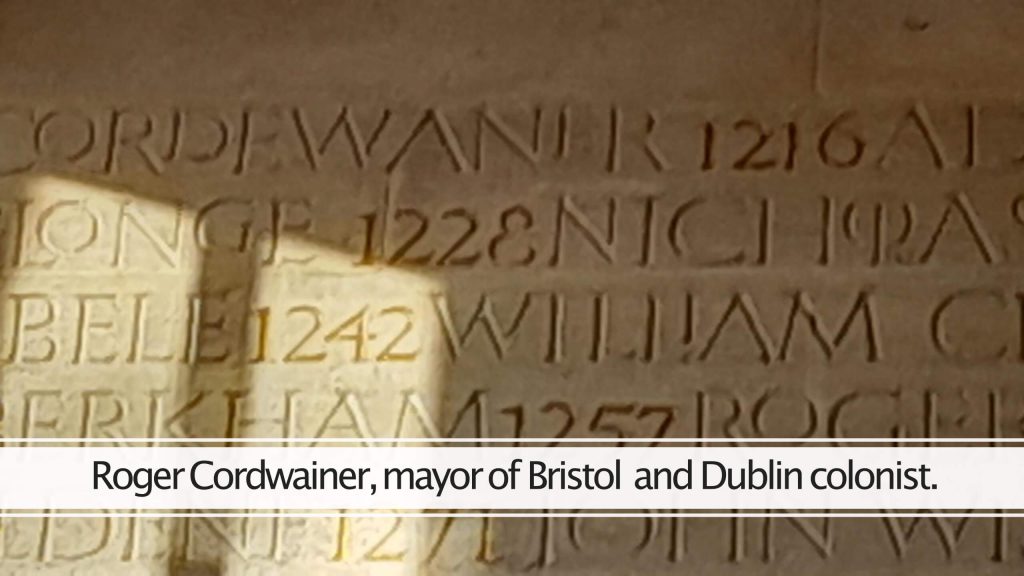
Trade between Bristol and Ireland flourished. Redcliffe pottery was exported from Bristol throughout Ireland and Ham Green pottery also. Money flowed from Ireland to Bristol such as rents of the monks of Dublin to Saint Augustine’s Abbey, revenue to Saint Marks (now the Lord Mayor’s chapel) from lands owned in Ireland, income to other religious houses in Bristol. Dundry stone was exported throughout south-western Ireland. The biggest exports from Ireland were fish and wool and later grain, although trade in the latter reversed with English grain going to Ireland. Bristol ships, eventually, had 91% of the trade in the Irish Sea.
In 1342 a grant was made of two shops in Bristol to 2 persons in Ireland. In 1357 merchants of Bristol and Clonmel in Ireland combined with regard to a ship from Bruges. The late 14th century cloth production area, stretching from Bristol to Winchester, exported a great amount to Ireland.
Richard, the second of England crossed to Ireland from Bristol in 1394 with a large force, taking an interpreter from Bristol to settle arrangements in the island, but eventually relationships between the Irish Gaelic chiefs and the Anglo Norman Lords foundered.
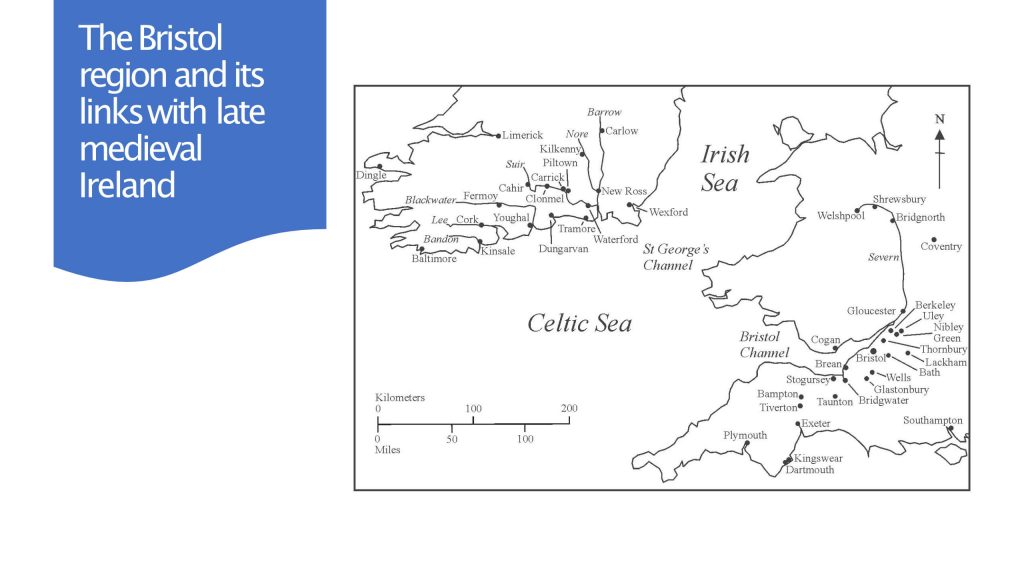
John Banbury (died 1404), was mayor of Bristol and Limerick. Nicholas Devenish, mayor of Bristol, 1436, had Irish roots. A large population of Irish developed in Bristol, but was then discouraged. The Matthew plied between Bristol and Ireland before its voyage across the Atlantic, after which it resumed its trade. Generally, as the 15th century came to an end trade with Ireland decreased in relative value.
(Talk summarised by Bev Knot)
